Swim Practice Social Distancing Protocol
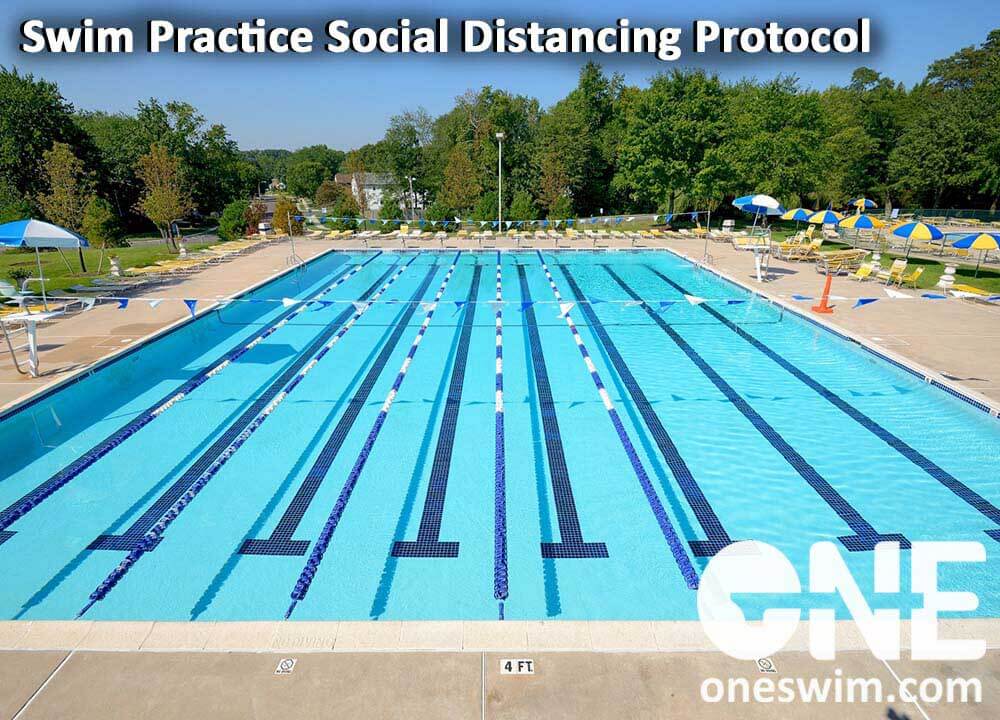
Can we safely swim with 6 people in a lane?
We hear a lot about the rules of running a gym with social distancing. There is plenty of support about managing our pool bathroom, or how to navigate at <50% capacity for a business. But as swim coaches the final key is to understand how to keep swimmers 6 or 10 feet apart while they are in a lane together. We can tether them to bungees on a lane line. We can have 2 swimmers per lane (one at each end of the pool). We can create complex lane position assignments with some swimmers at the wall and others in the middle of the pool. But none of these options provide us any long term value if we need to ‘socially distance’ our swimmers for months or longer. Having some swimmers start off the wall while others start in the middle of the pool creates chaos, collisions, and confusion for swimmers and coaches. If you only circle swim from a dive and have swimmers get out at the end of each distance, you still have pile-ups if swimmers don’t get out of the pool very quickly, and with exhausted swimmers, this certainly can’t happen very long.
We coaches need a safe way to get back into training swimmers. We cannot wait until the last possible moment to resume practices. We know that our swimmers’, parents’, and coaches’ safety is the most important problem at hand. We don’t have a lot of grace period to sort out how we build new sets at the same time as how we keep the swimmers from becoming confused and stopping at the walls together. When parents see their swimmers stopping together in the lane, they will quickly get frustrated and pull their kids from our teams or move them to a team that they feel does a better job of keeping their swimmers separated.
The SeaWolves Swim Team, located in Georgia, started training with Social Distancing protocols in late February, before stay-at-home orders were in place. The SeaWolves started with 2 small training groups so they could document their workouts, sets, and processes just before they had to stop swimming in order to have videos and methods ready for training the rest of their swimmers when the team came out of hibernation later. This early experimentation with social distancing protocols gave the SeaWolves the chance to evaluate what would work and what wouldn’t. They quickly decided that all of their swimmers needed to have a ‘home base’ to return to as their new ‘starting wall’. When 1-2 of their swimmers were starting at a wall, it was a physical disadvantage to those in the same lane that were starting away from the walls. They also learned that the process of rotating the stopping locations (such as rotating who was at the wall each set) was far too confusing and created accidental ‘pile ups’ between swimmers, even though the SeaWolves were training with headsets so the coach was talking to each swimmer 100% of the time. Still accidents happened and swimmers ended up stopped in the same locations. So their experience taught them that;
- It was best to assign a ‘home’ position for each swimmer.
- The ‘home positions’ all needed to be away from the walls so no one had an advantage or disadvantage.
- The ‘home positions needed to be marked by a unique color, both below the lane line as well as something standing up well above the lane line so it could be seen when swimming on the back or on the stomach for any type of kick or swim sessions.
- Each swimmer needed a way to store their equipment at their ‘home’ position to avoid going back to the walls for gear changes and thus avoiding any ‘pile up’ at the walls between sets (and also save time in the workouts).
- Their gear storage needed to be out of way and not drift/float into the lanes when circle swimming.
The process the SeaWolves developed allowed them to fit as many as 5 swimmers per line and none of them were starting/stopping at a wall position (1 under each backstroke flag, 1 at each red line, and 1 in the center of the pool). However a 6th location was possible at the wall, as long as that was for the leader in each lane and not the last person in the lane. If the last person in the lane is on a wall, they will easily push off and run into the person in front of them due to the clear advantage of a wall push compared to a start without a push. So as long as the front lane leader is on the wall and the other 5 swimmers are stationed along the lane line, this can work but not ideal. The layout the Seawolves used with 5 positions down the lane creates about 12 feet from each swimmer in the same lane and 8+ feet between swimmers and the swimmers in the lanes next to each other.
But the SeaWolves were left with several physical problems that needed to be solved:
- How to mark each ‘home’ position above the lane line so it was visible when swimming on the back
- How to store all possible gear so each swimmer could stay at their ‘home’ position 100% of the time during a 2 hour practice and not create a lot of swimmer interactions as swimmers went back and forth to the walls to get their gear.
They also had to re-invent their terminology so swimmers could understand old sets and new workouts:
- Was ‘100 yard swim’ from wall to wall or from ‘home’ position back to ‘home’ position? For this they decided to call ‘home to home’ a ‘true 100’. When they wanted to race 100 yards from ‘wall to wall’ the swimmers know that a ‘wall 100’ means that you have a easy swim to the first wall and then race wall to wall for 100 followed by an easy circle swim back to their home location (which actually works out to 150 yards as the kids were quick to point out!)
- That a ‘true 75’ yard distance is not actually possible unless you have swimmers stopping across from their ‘home’ position and crossing the lane in front of other swimmers still finishing their swim.
- 100 IM can be ‘true’ or ‘wall-to-wall’… but mostly it needs to be ‘wall-to-wall’ or the lead swimmers only have 1-2 strokes of Fly. Therefore IM swims need to have an ‘easy free’ on the front and back of the 100 or 200 IM.
- With all of the swimmers starting away from the walls, coaches have to address HOW swimmers can start. Most swimmers naturally want to drop down to the floor to push off, but this process is near impossible in very deep pools and far too easy when part of your lane is only 4 feet deep. So to level the playing field, the SeaWolves decided they would have all swimmers laying flat with their right hand on the lane line (just in front of their Station Marker) and get ONE single pull on the lane line to start off. When some swimmers started from the floor and others from a kick and others from a lane pull, there are too many pile ups and it is impossible to get timed sets and compare times from such differences.
- Timed set can be tricky. For swimmers without headsets they can start with the clock from their lane position (with a lane line pull) and then sight the clock as their eyes pass their Station Marker. If the swimmers have headsets it is easier if the coach calls out the times (every second) and the swimmers listen for their time as their eyes pass their Station Marker.
To the surprise of the SeaWolves coaches and their swimmers, their swimmers actually liked and preferred this process of having their own space. They liked everyone starting and stopping at the same time without the 5 sec delay for each person and as much as 40 sec from the leader to the last person in the same lane. They liked having their own space and not fight to get to the wall for a rest. They liked having their own gear in their own space and not having to climb over each other to get their fins. Any swimmer that was used to swimming in the back part of a lane were much happier that they could hear the instructions because they stopped at similar times as the leaders. Everyone got to hear each other’s jokes and banter instead of only the leaders. They didn’t have the leaders leaving just as the last swimmers were finishing up, so they all have similar breaks and could enjoy their social time better as a group. Swimmers are creatures of habit so the SeaWolves coaches expected to have a lot of push back from their swimmers ‘hating’ it like they hate most new changes. But it was a pleasant surprise when the swimmers liked it. And most importantly, the SeaWolves swimmers knew that a process like this would mean they could get back to swimming faster after a stay-at-home order was lifted.
To solve the physical problems SeaWolves turned to their sister company, ONESwim.com. These 2 companies constantly work together to develop and test new swim products for competitive swim teams. ONESwim packaged the SeaWolves approach to social distancing into their Swim Practice Social Distancing Protocol by ONEswim.com. This protocol offers plenty of videos, solutions, and answers to how they can provide swim teams with a high end training program while keeping them apart. This Swim Practice Social Distancing Protocol is a great way to train while keeping a constant and appropriate distance between swimmers to remain safe from possible infection. ONESwim started by solving the problem of color coding Station Markers that would stand up above the lane line for easy identification by swimmers above and below the water. The Station Marker attaches to the lane line with just a simple carabiner and is weighted to hang straight down below the lane line and a colored float that stands straight up.
To account for swim equipment the protocol includes a Gear Hammock that hangs below the lane line to hold fins, paddles, snorkels and more. A weighted Kickboard/Buoy Lane Line Mount will hold a kickboard and/or buoy at the same time, in an upright position against the lane line so it does not float into the lane. These tools allow the swimmers to easily access any of their equipment for quick equipment changes throughout the set without having human contact at the walls. The ONEfocus is the modern headset system by ONESwim that works perfectly for social distancing. Unlike some headphone systems that turn off when the swimmers do a flip turn, the bone conduction ONEfocus headsets stay on 100% of the time using radio frequency,, even when the swimmers are quite deep underwater. The coach has a microphone headset and is talking to all the swimmers in his group at all times. There are 7 channels so different coaches can be on different channels to handle up to 7 groups in the same pool. With new terminology and spreading out swimmers all down the lane, the ONEfocus makes it so the swimmers can even hear the coach whispering to them with ease. They won’t miss anything and the coach is more relaxed while training completely new sets and processes.
Check out the Corona Virus Prevent Plan for additional help from ONESwim with workouts, videos, plans, terminology and other support for your in-water training for 2020. Share your own sets and ideas about how you use this system as well.
Getting back to swimming is exciting but of course we don’t know if we will have meets this year, have more stay-at-home orders, will get most of our swimmers to return, or much of anything too far into the future. But being prepared to show our families that we CAN be safe is of the utmost importance to the industry right now, so take the time to do your research and have a plan.
Additional Information:
The Station Marker is used to mark the lane line so that swimmers can see it both above and below the water level. To install, the swimmer just hooks on a carabiner to the lane line, allowing a color coded foam float to stick up above the water and an equal colored weighted strap to hang below. This acts as a ‘home station’ for each swimmer to be spread throughout the lane. Each swimmer starts and stops from the same point throughout the lane, to eliminate any need for time at the wall. This pairs with the Gear Hammock to hold gear the swimmer may need at their stations.
The Gear Hammock is a gear bag that easily attaches and hangs under the lane line. A weighted version will help keep some floating items from drifting into the lane. This product is ideal for any size fins, snorkels, paddles, and much more at the same time. A drawstring closes to keep any items from drifting out of the bag.
Kickboard/Buoy Lane Line Mount
The Kickboard/Buoy Lane Line Mount easily attaches kickboards, buoys, or both at the same time. The mount keeps the kickboard and buoy out of the way of the swimmer, and upright against the lane line. The weighted strap design makes it easy to insert and remove any kickboard or buoy from the mount.
Headsets
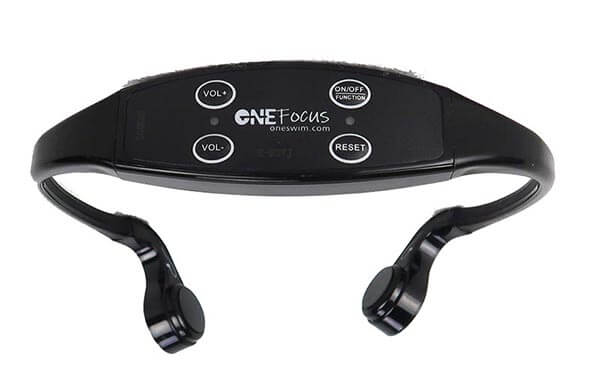 The ONE Headsets include a protective case and DC charger. Swimmers can easily charge their individual headset on the way to and from swim practice, in the car. This is an extremely helpful tool for starting practices back up. Being able to communicate to your swimmers at all times has never been more important. Keeping swimmers away from each other in the lane, will be much easier to control if you can talk directly to them through their headsets because you know they can hear you.
The ONE Headsets include a protective case and DC charger. Swimmers can easily charge their individual headset on the way to and from swim practice, in the car. This is an extremely helpful tool for starting practices back up. Being able to communicate to your swimmers at all times has never been more important. Keeping swimmers away from each other in the lane, will be much easier to control if you can talk directly to them through their headsets because you know they can hear you.
Follow One Swim on social:
Instagram:@Swimmersbest_
Twitter: @swimmersbest
Facebook: @SwimmersBest
YouTube: Swimmer’s Best Channel
The above press release was posted by Swimming World in conjunction with One Swim For press releases and advertising inquiries please contact Advertising@SwimmingWorld.com.




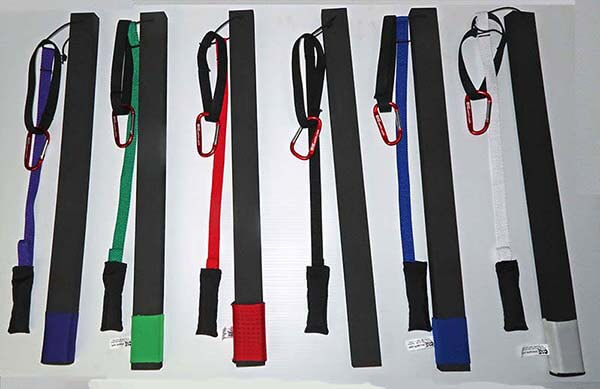
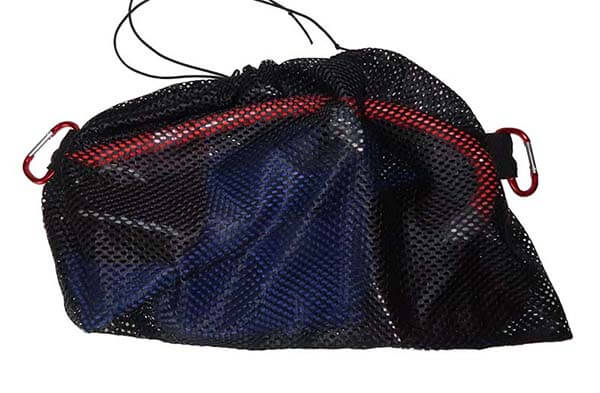
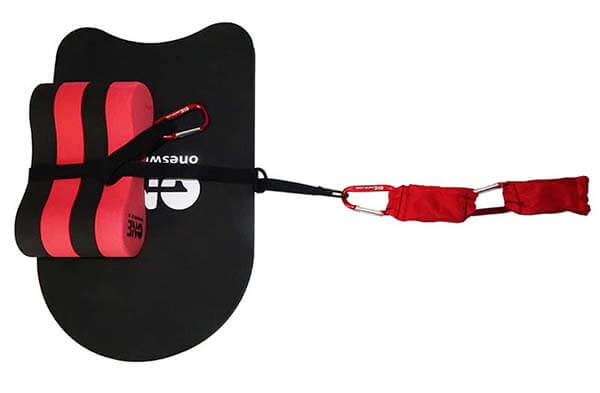
Lee Schwartzman did you see this?
Beth Lawson Roth I’ve got it figured out with 4 per lane no problem.
Lee Schwartzman lets gooooo!!!
Beth Lawson Roth open the pool ….I’m ready.
Lee Schwartzman give me a day and the approval from the state ?
Beth Lawson Roth give me the approval from the state and that’s the date. Lol
Mallory Rodriguez check this out. Its a thought.
This could work but my question is can it work for longer distance sets
My kids practice in small groups, my daughter is usually by herself in the lane, maybe sharing it with 1 other swimmer. My son maybe has 3 more swimmers in his lane. The only problem is that the facility they use is a high school pool, it probably won’t be open for a while.
Andrea Banicz you never know. My kids train at a high school pool as well (in St Louis) and our club was told by the district that as soon as pools can open, we’ll be allowed to start training immediately. That could be late May to very early June.
Jennifer Rinesmith We are Schaumburg, IL suburb of Chicago in Cook County. Our team is working with all the pools in the area hoping to come up with a solution. Unfortunately several park districts in the are already announced they are keeping their pools closed.?
Andrea Banicz that stinks. We have had a few community pools close around here for the summer too. Good luck to you. I hope you all get some pool space.
Isn’t it called the “5 second rule!”
I don’t know if it matters how many are in a lane. When I coached it was fairly well understood that when one person gets sick the rest of the team usually gets sick too….?
The stupidity continues.
This is crazy
Danyelle Grondin Parker
Lee Brown Taylor III Genius!
But they are passing each other in the pool…
Trina Jackson Falca they are in chlorine… Probably one of the safest places… It’s the locker rooms that might cause issue
Loretta Harris I just find all of this so bizarre.
Trina Jackson Falca the whole situation is bizarre…but we know several kids who have qualified for the Olympic Trials and they need to get back to training.
Loretta Harris I agree. It’s so sad. So many hoops to jump through for these poor kids.
JT Tiernan
Carl ? now if we only had a team and a pool.
Swimming Australia
Coming from a more heavily hit city (Chicago) I, as coach of 10 years wouldn’t feel comfortable with this. If you have multiple swimmers per lane it’s inevitable that they pass each other. And that brings up the fact that you need to establish a breathing direction as well.
This might be a fine option for areas less infected, but why rush opening and training? Our sport is about health and growth. Set backs are part of development.
Finding excuses for this to be okay is the problem. I’m not willing to risk a single life on my team, or the family members on my team due to non expressive infection. The sport can wait. Lives come first. If one death can be prevented it’s worth the wait.
Thanks for killing the sport! ???
Yes it can work!!!
Probably not. I say just elite athletes return to training because with the other kids it will be harder to spread. I say maybe no more then 2 per each end of the pool. Each kid can have their own side of the wall at either end of the pool.
Marianela Vargas
The top ten percent of a club start. Then slowly keep adding more kids at different times.
Glad our club already kept lanes at 2-3 swimmers. If they’re starting top 10% first, we’re still good
Curious… If data demonstrates that COVID poses an even lesser fatality risk to those 18 & under than even the flu, how would that change people’s perspectives regarding these suggested guidelines & plans?
Considering that all data thus far has shown that the mortality rate of those under 18 is well less than 0.1%, which is the overall mortality rate of the flu, my question is not hypothetical.
In fact, according to the CDC, of ALL COVID DEATHS (not all confirmed cases of infection), those under the age of 25 only make up 0.1% of that total.
In NYC, the COVID epicenter, the 18 & under mortality rate is .04%.
We also know that this .04% rate does not factor in those who may have been asymptomatic or undiagnosed mild cases.
Considering that up to 27% of NYC is believed to have been infected (based on the state run antibody testing), it can be deduced that the true mortality rate of those under 18 is minuscule at best – and well under that of the flu.
So my question, should the facts play into the reopening guidelines & plans of USA Swim Clubs?
#factsbeforefear
https://www.worldometers.info/coronavirus/coronavirus-age-sex-demographics/?fbclid=IwAR0e54UxH7bwIi2YnEV-K2AkyeSeZ6x49s8yEhFgiAeQELx8bdiEmrqLBY0
Flynn Burroughs I envy your perseverance!
Flynn, of course they should; as should the fact that young people carry and infect and as such all plans out of a pandemic in which a quarter of a million have lost their lives so far need to factor in thought more lateral than ‘the kids are ok’. Old folk swim too, as we know. Should the plans, therefore, keep them away from pools? Such things are a drop in the ocean of issues that require integrated and joined up thinking. Facts, certainly, but not in one dimension. There’s a key list of reasons – not fears – why caution and steady steps are urged, including the thoughts of a scientific community watching the prevalence of a derivative illness in children with potentially long-term effects on health in later life as a result of COVID-19 infection. Sound and expert minds are saying ‘we need to know more’: it isn’t fear that leads us to listen, its common sense and good parenting to heed what experts say when a virus never with us before is among us. That’s about the interests and the safety of our citizens, the young included.
This is not fear but it is something every parent and coach wishing to rush back to the water should certainly be aware of: “He said many of their symptoms — from rashes to redness of eyes to blood circulation problems — appear to be rooted in an “overall inflammatory response.” In some patients the syndrome seems similar to a rare childhood illness called Kawasaki disease, which can lead to inflammation of the blood vessels, especially the coronary arteries…”
https://www.nytimes.com/2020/05/05/nyregion/kawasaki-disease-coronavirus.html
By all means factor in the v low mortality rate (not low rate of infection) among the young but Don’t let that be the pillar on which we base a plan to return to the water. The issues are far more complex.
There are things we yet need to know – and while that should not leave us frozen to the spot, it is reasonable to point such things out, discuss and take good care. In this thread there are those who appear to see all discussion of the wider issues, implications and new discoveries and lines of inquiry on a virus just a few months old in the human population as constituting “fear”. I beg to differ. Awareness and knowledge count and need factoring in, be that abuse, mental health, viruses or anything else all of us have opinions on but few of us actually have responsibility for outcome in the world beyond our own door. This, for example, is awareness, not fear: https://www.ft.com/content/be7e66c0-1243-45dd-829f-8b192c18acff
How does SD work in a 25 yard pool?
t